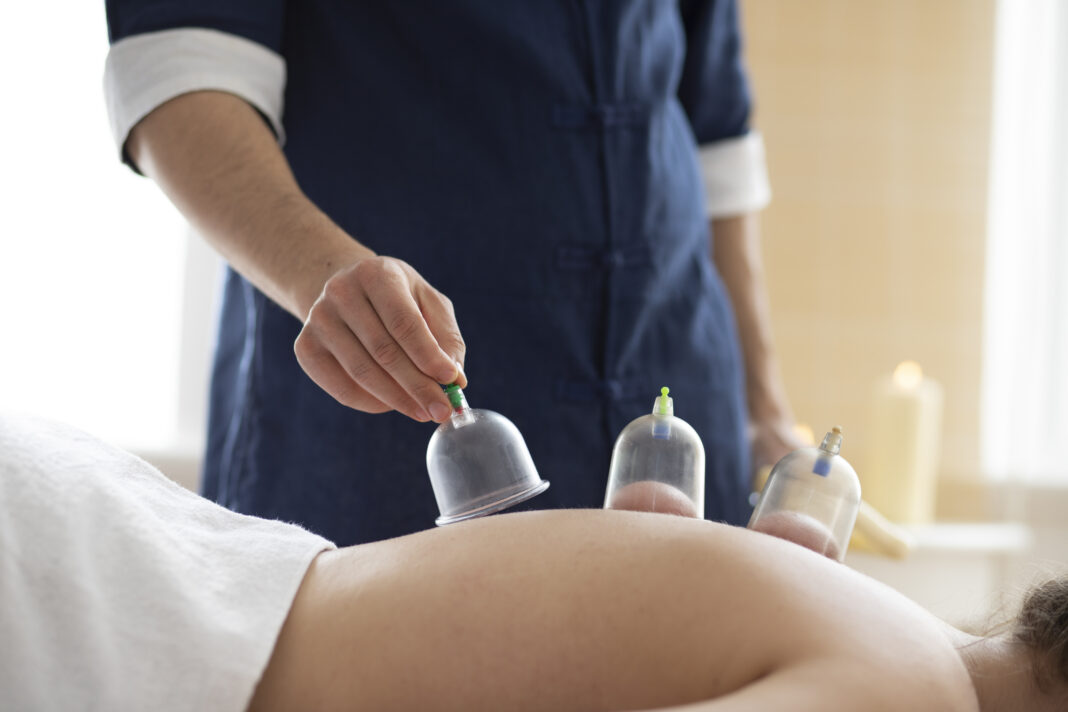If you’ve been hearing buzz about cupping therapy and its potential benefits for chronic pain, you’re probably asking yourself: What exactly is cupping? How does it work? Can it help with lower back pain, neck pain, or arthritis?
Chronic pain feels relentless, impacting daily life and interfering with the mood. Cupping therapy, an ancient healing method, has surged in popularity as a natural approach to relieving pain. Let’s explore what science and experience say about how cupping can help manage chronic pain—and what you can expect if you decide to try it.
What Is Cupping Therapy—Really?
Cupping therapy involves placing special cups (made of glass, silicone, or bamboo) on the skin to create suction. This suction pulls the skin and tissues upward into the cup, aiming to increase blood flow, reduce muscle tension, and promote healing.
There are different styles:
- Dry cupping:
Cups create suction and stay in place for a few minutes.
- Wet cupping:
The process involves making small skin incisions and suction pulls out a small amount of blood (less common and requires a trained specialist).
- Moving cupping:
Cups are gently moved across the skin while suction is maintained.
The therapy’s roots date back thousands of years. It was used in many cultures, from Traditional Chinese Medicine to Middle Eastern folk treatments.
How Does Cupping Therapy Work to Relieve Pain?
The exact biological mechanisms are still being studied. But several theories explain how cupping provides relief:
- Improved blood circulation:
Suction draws blood to the surface, delivering oxygen and nutrients to tired muscles and tissues, promoting repair.
- Relief of muscle tension:
The pulling effect helps relax tight muscles, breaking adhesions between tissue layers.
- Activation of the nervous system:
Cupping stimulates sensory nerves, disrupting pain signals sent to the brain (known as the “pain gate” theory).
- Reduction of inflammation:
Some research suggests it lowers inflammatory markers, which contribute to chronic pain.
- Promotion of lymphatic drainage:
Helps remove toxins and reduce swelling.
Together, these benefits make it an appealing complementary option for chronic musculoskeletal pain.
What Does Research Say About Cupping and Chronic Pain?
Scientific studies show growing evidence supporting cupping’s effectiveness for various chronic pain conditions:
- Chronic low back pain:
Multiple studies suggest moderate evidence that cupping reduces pain intensity and improves function.
- Neck pain:
Moderate to low-quality evidence indicates cupping can relieve neck stiffness and pain.
- Knee osteoarthritis:
Some trials report pain relief and better mobility from cupping combined with other therapies.
- Other conditions:
Patients with herpes zoster, fibromyalgia, and migraine have also reported benefits.
However, many studies point out that more high-quality research is needed. Some trials had small sample sizes or inconsistent methods. Still, the existing evidence paints cupping as a promising adjunct to conventional pain management.
What Can You Expect During a Cupping Session?
If you choose to try cupping therapy for pain relief, here’s what generally happens:
- Preparation:
The therapist cleans the skin area and may apply oil for easy cup movement if using moving cupping.
2. Cup placement:
Cups are placed over affected muscles or pain points on your body—commonly the back, neck, shoulders, or legs.
3. Suction created:
Either by heat (fire cupping) or a pump, suction pulls the skin inside the cups.
4. Duration:
Cups stay on the skin for 5 to 15 minutes, depending on your condition and comfort.
5. Removal:
Cups are removed. You might notice circular marks or mild bruises that typically fade in days.
6. Aftercare:
Your therapist will give tips on hydration, gentle stretching, and avoiding harsh activity to maximise benefits.
Many people describe the sensation as a warm, pulling pressure—not painful, but unique.
Who Can Benefit Most from Cupping Therapy for Chronic Pain?
Cupping therapy is ideal for individuals with:
- Persistent lower back or neck pain.
- Joint pain due to osteoarthritis.
- Muscle stiffness from overuse or stress.
- Headaches and migraines are linked to muscle tension.
- Fibromyalgia and other chronic pain syndromes (as part of a holistic care plan).
It’s a safe, non-invasive therapy for many.
How to Maximise the Pain Relief Effects of Cupping?
For best results, consider these tips:
- Combine with other therapies:
Massage, physical therapy, or acupuncture can complement cupping.
- Stay hydrated:
Helps flush out toxins and reduce soreness after treatment.
- Rest and stretch gently:
Support muscle relaxation and improve flexibility.
- Regular sessions:
Consistency often enhances benefits for chronic conditions.
Final Thoughts:
Chronic pain is complex, and no single therapy is a magic fix. But cupping offers a promising, natural option to add to your toolbox. Its ability to improve circulation, relax muscles, and interrupt pain signals makes it worth trying, especially if traditional treatments haven’t given complete relief.
If you’re ready to explore a holistic method with ancient roots and modern benefits, cupping therapy might be your next step toward relief. If you’re considering cupping therapy in Portsmouth, trust only Flower of Life. The skilled therapists will help you get rid of your chronic pain that has been troubling you for years.



